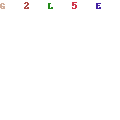Gotu Kola
[size=75]From Wikipedia, the free encyclopedia [/size]
Centella asiatica is a small herbaceous annual plant of the family Apiaceae, the carrot and dill family, native to northern Australia, Indonesia, Iran[1], Malaysia, Melanesia, New Guinea, and other parts of Asia. Common names include Gotu Kola, Asiatic Pennywort, Luei Gong Gen, Antanan, Pegagan, Pegaga, Kula kud and Brahmi (although this last name is shared with Bacopa monnieri and other herbs). It is used as a medicinal herb in Ayurvedic medicine and traditional Chinese medicine. Botanical synonyms include Hydrocotyle asiatica L. and Trisanthus cochinchinensis (Lour.)
The stems are slender, creeping stolons, green to reddish green in color, interconnecting one plant to another. It has long-stalked, green, reniform leaves with rounded apices which have smooth texture with palmately netted veins. The leaves are borne on pericladial petioles, around 20 cm. The rootstock consists of rhizomes, growing vertically down. They are creamish in color and covered with root hairs.
The flowers are pinkish to red in color, born in small, rounded bunches (umbels) near the surface of the soil. Each flower is partly enclosed in two green bracts. The hermaphrodite flowers are minute in size (less than 3 mm), with 5-6 corolla lobes per flower. Each flower bears five stamens and two styles. The fruit are densely reticulate, distinguishing it from species of Hydrocotyle which have smooth, ribbed or warty fruit.
The crop matures in three months and the whole plant, including the roots, is harvested manually.
Centella grows along ditches and in low wet areas. In Indian and Southeast Asian centella, the plant frequently suffers from high levels of bacterial contamination, possibly from having been harvested from sewage ditches. Because the plant is aquatic, it is especially sensitive to pollutants in the water, which easily are incorporated into the plant. [2][3]

